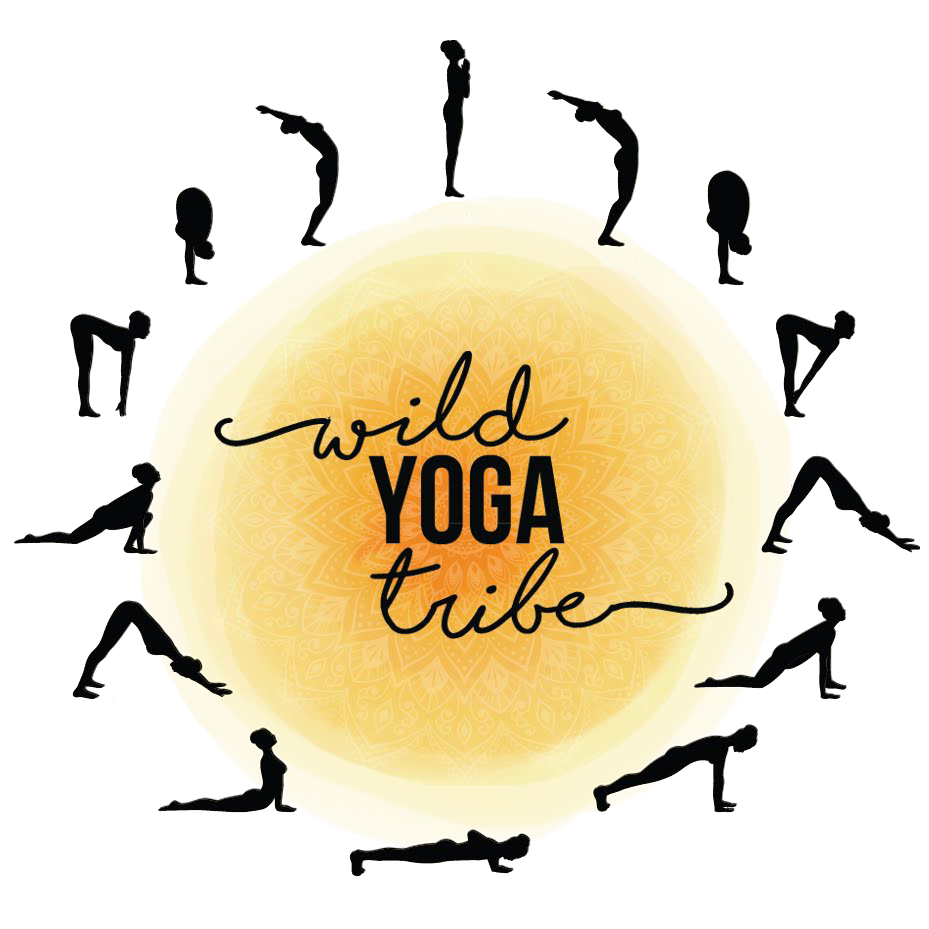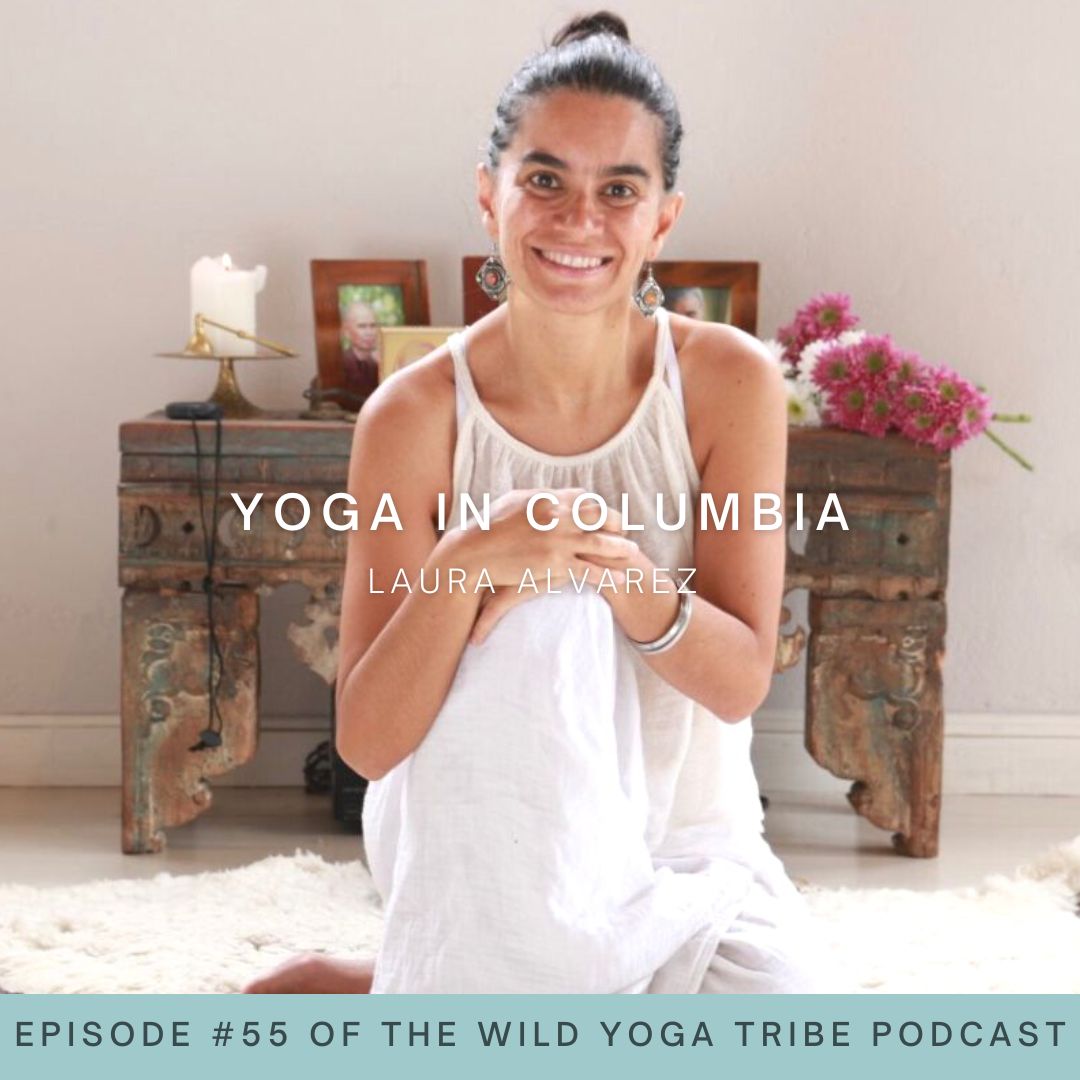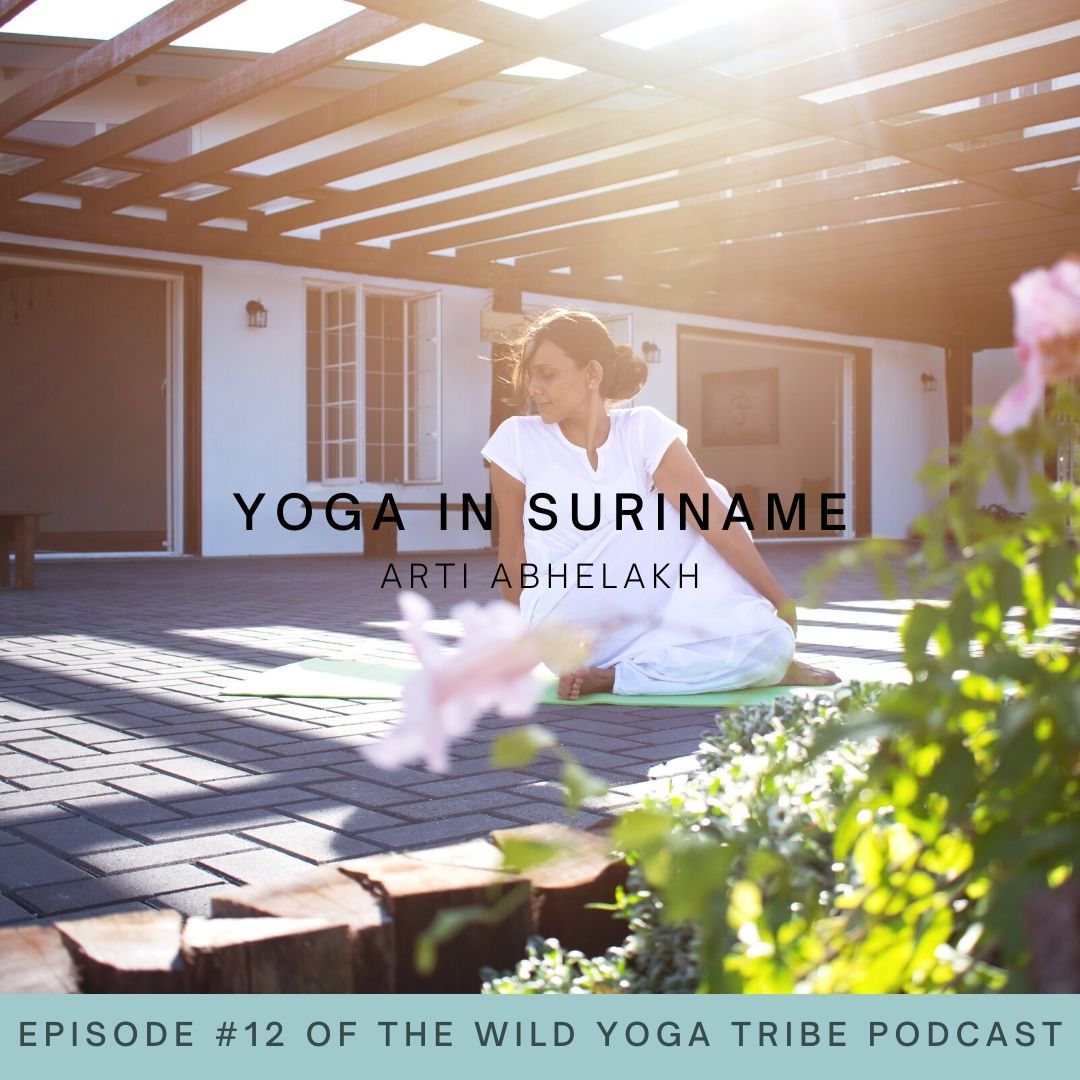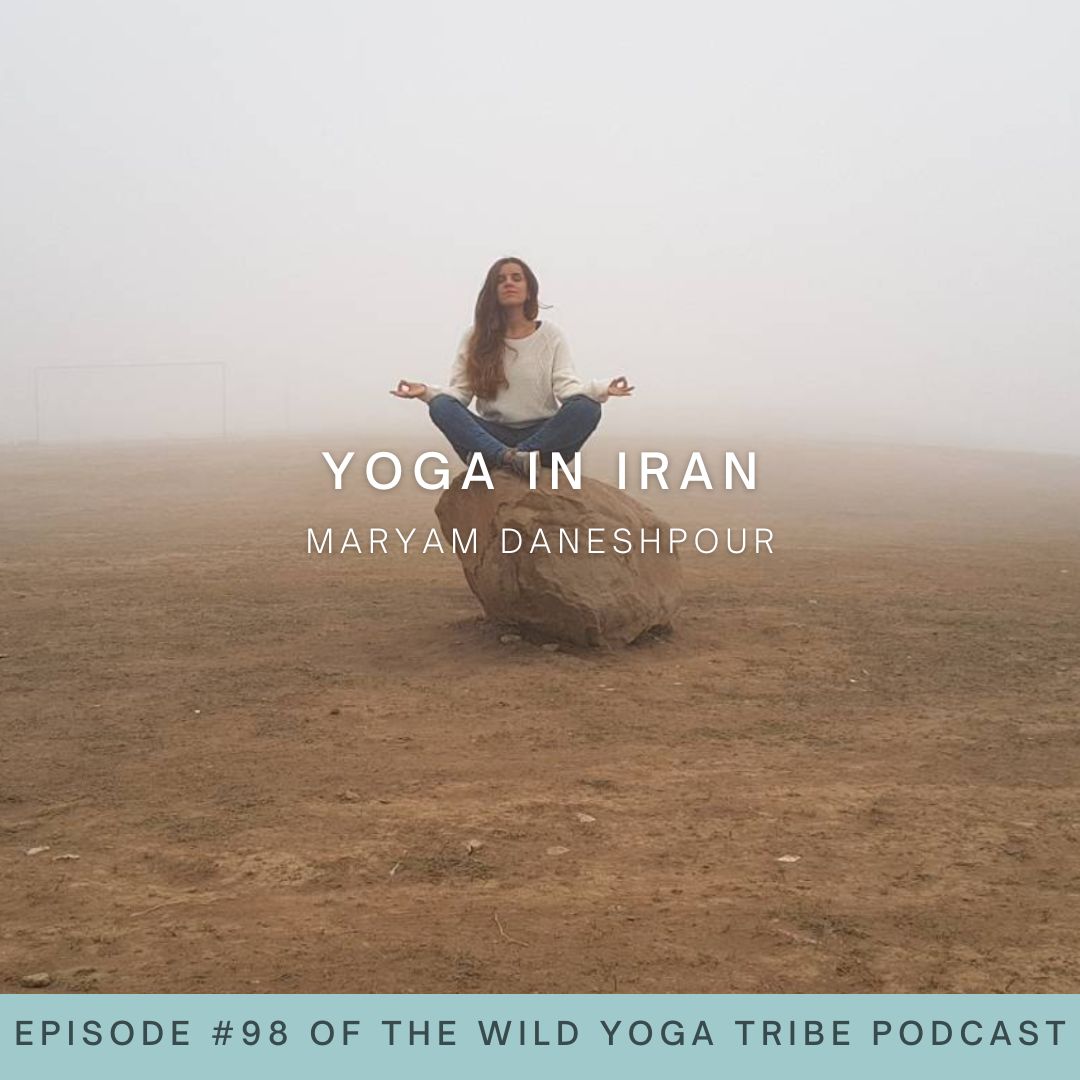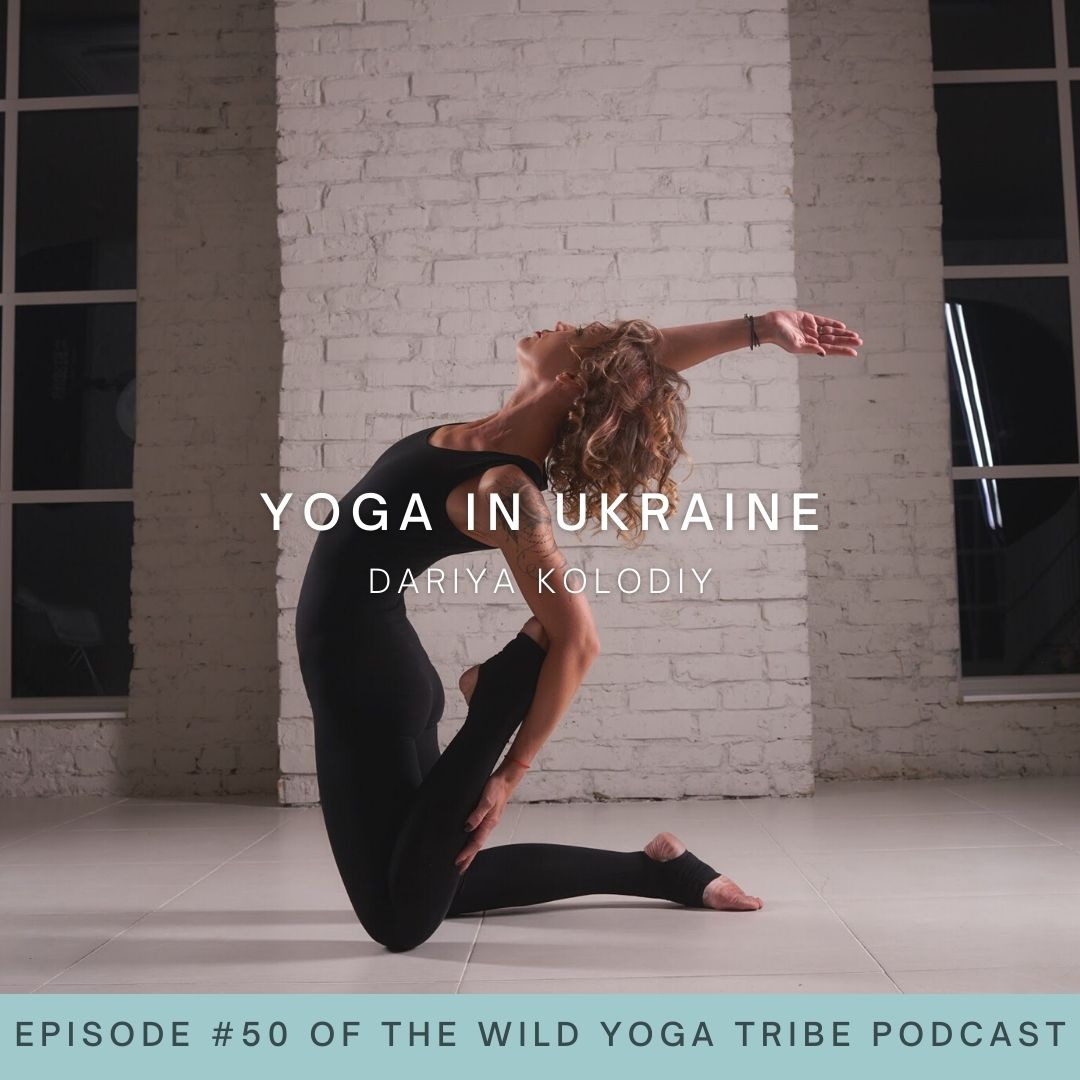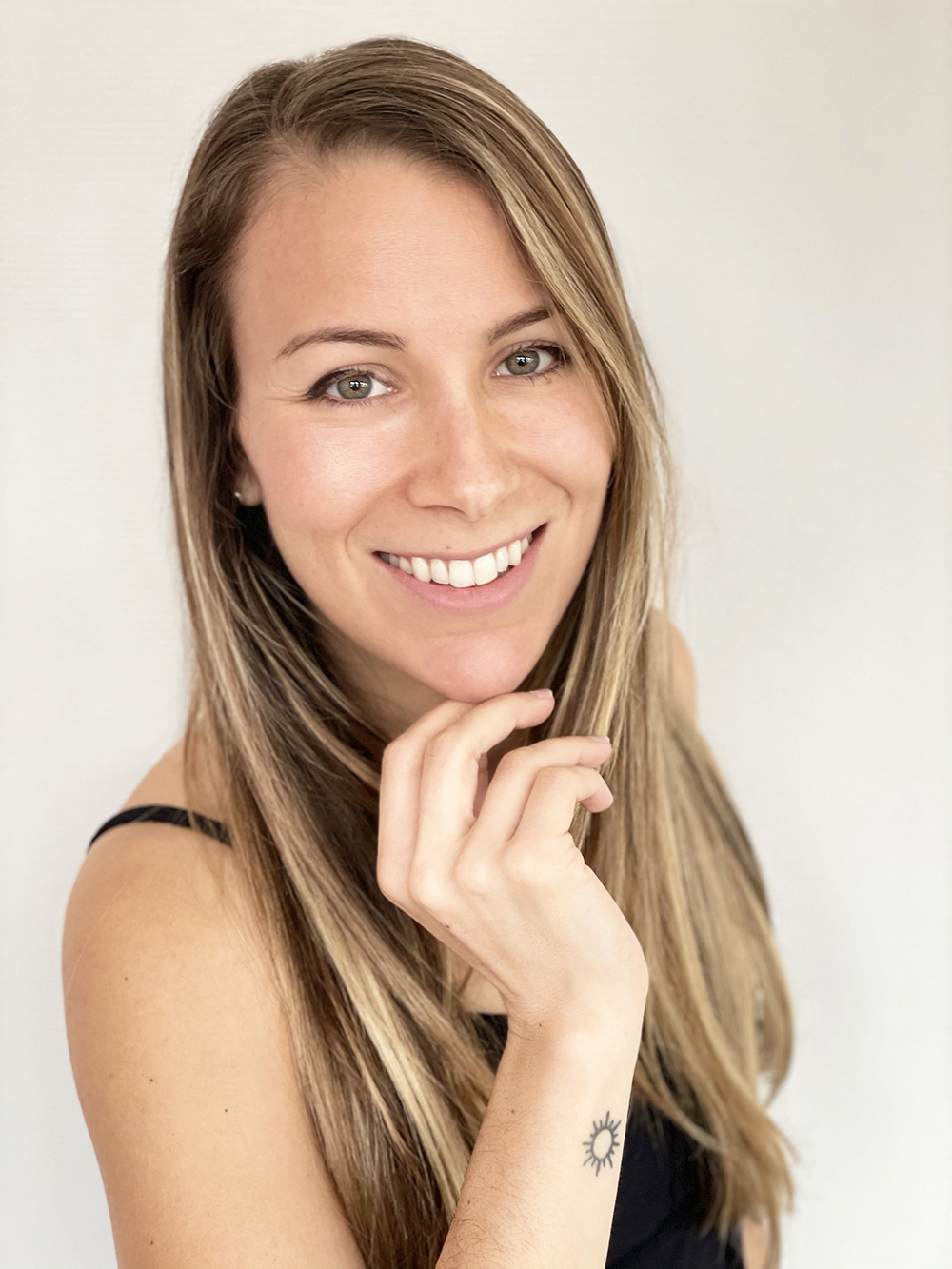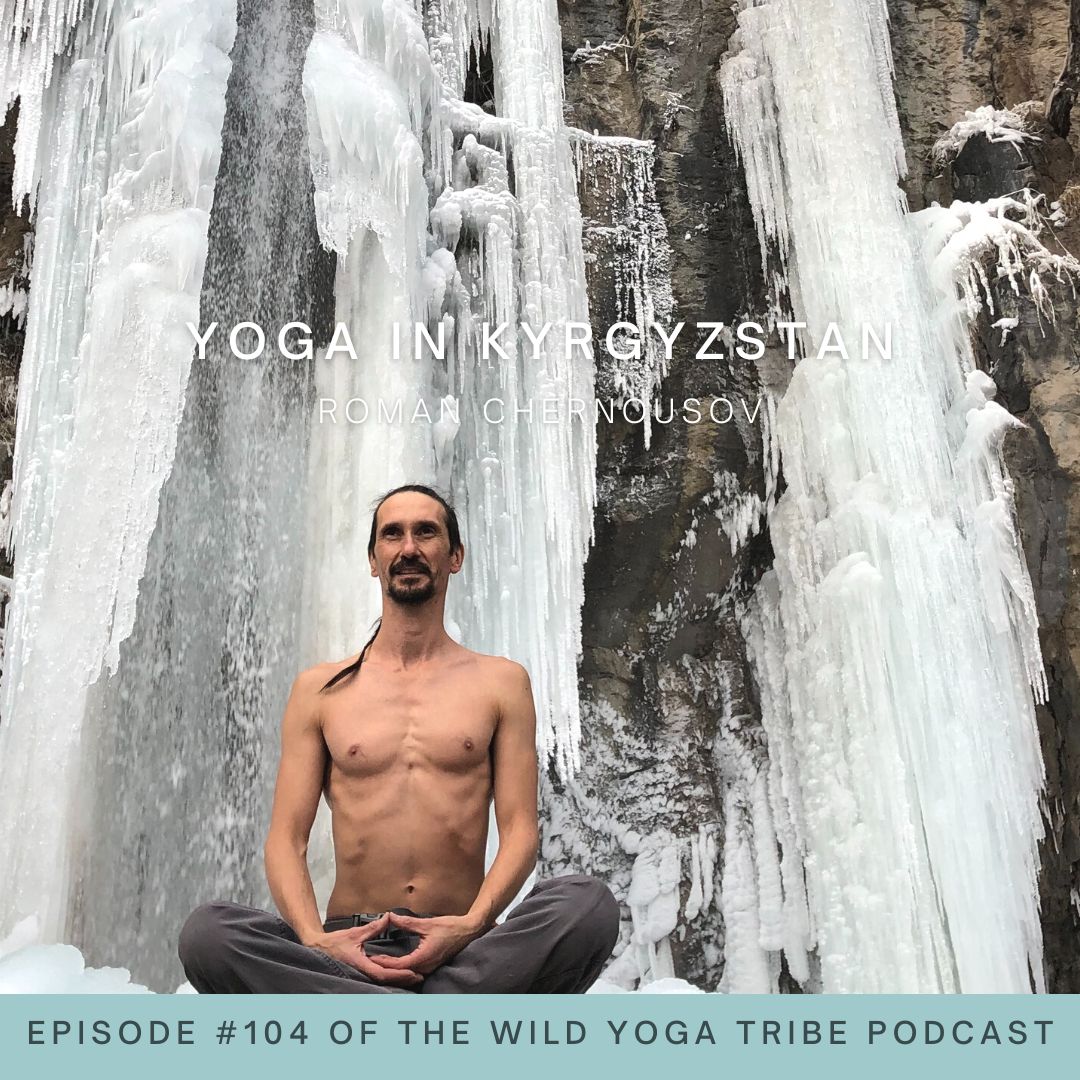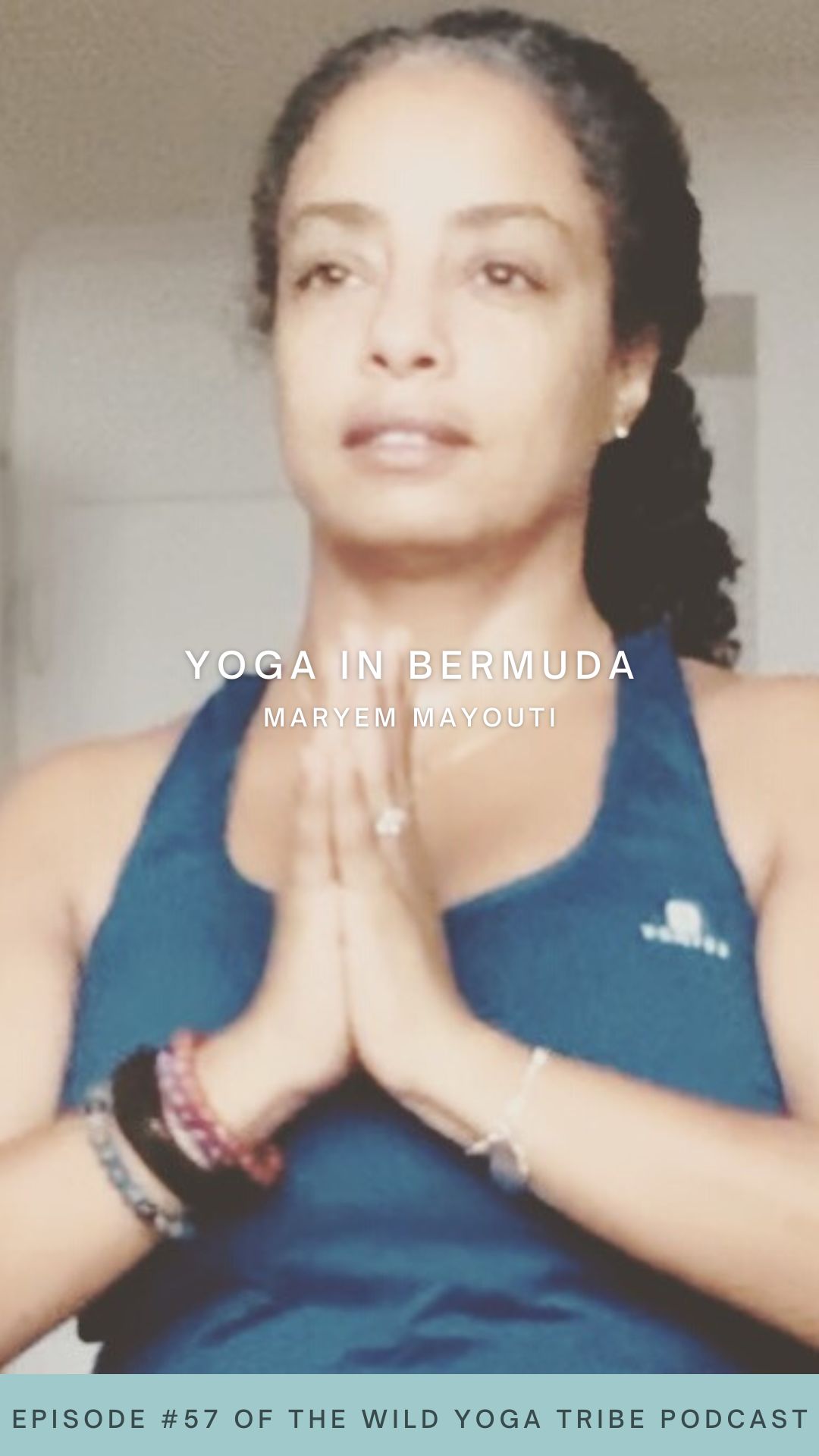
EPISODE #57 – YOGA IN BERMUDA
Meet Maryem Mayouti
Meet Maryem Mayouti, a yoga teacher from Bermuda who shares with us all about the humility and humanity in yoga! Welcome to yoga in Bermuda!
Wild Yoga Tribe Podcast Episode 57 – Humility and Humanity in Yoga – Yoga in Bermuda with Maryem Mayouti
Welcome to Episode #57 of the Wild Yoga Tribe Podcast! My conversation with Maryem Mayouti, a yoga teacher from Bermuda, was so vibrant and engaging as we dove head-first into moving the mind out of the brain and back into the body. I hope that this conversation made you want to seek a deeper connection with the breath, your anchor, and your most powerful reminder of where you are.
If you’re looking to tune into a podcast episode that is all about the humility and humanity in yoga, then this is the conversation for you.
Tell me more about Maryem Mayouti
Maryem Mayouti is a certified, RYT-500 yoga instructor and a certified mindfulness teacher. Her yoga classes are anatomy-informed and her instructions are geared towards injury prevention and connection to one’s breath. She understands and reminds her students that skeletal differences and anatomical variations will stop us from looking like yoga models in pictures, so it is best is to focus on the inner journey. By bringing everything back to the breath, she helps the practitioner learn asana in a way that is relatable and easy to practice, so that it may be taken anywhere.
What to expect in the Yoga In Bermuda episode of the Wild Yoga Tribe Podcast
Maryem actually first came to yoga through a gym in Bermuda, and she walked into the room and never looked back. It did something to her mind, to help some healing take place. It didn’t take long in the conversation before we started talking about yoga beyond the asana and the is eight limbs. That being said, Maryem said so beautifully how “focusing on the movement and breath takes your brain out of your mind and back into your body.
We talked about the power of being in a yoga class with others, and the communal impact of a yoga class. As social beings, being in a yoga classroom with other people doing the same thing as you is a powerful experience. Maryem defines yoga as “yoga lies somewhere in between grounding and connecting.”
Our conversation flowed so naturally as we touched on how humility is vital in a yoga practice, as is the need to be compassionate and kind to our bodies and to each other.
In regards to yoga in Bermuda, Maryem points out how yoga has been accepted globally not just because it’s mainstream, but because the benefits are real and have now been scientifically proven. She sees Bermuda as a reflection of that. While Maryem doesn’t own a yoga studio in Bermuda or teach at one yoga specifically, she has taught in a handful of yoga studios around the island and enjoys teaching yoga in all different kinds of places and spaces. And did you know that Bermuda is only 21 square miles big? That tiny of an island means a tight-knit community. With abundant natural beauty, Bermuda really is Bermudaful!
Curious for more? Tune into the whole Wild Yoga Tribe podcast episode.
Favorite Quote From Maryem Mayouti
“For me, yoga lies somewhere in between grounding and connecting.”
What’s in the Yoga in Bermuda episode?
Feel like skimming?
Humility and humanity in the practice
Be kind to your body
Moving the mind out of the brain, and back into the body
The communal impact of a yoga class
Yoga beyond the asana
Connect with Maryem Mayouti
https://www.instagram.com/bermudaful.yoga
Support the podcast:
https://www.patreon.com/wildyogatribe
Want more?
https://wildyogatribe.com/thepodcast/
Everything you need is just one click away! Check out all the resources here: https://linktr.ee/wildyogatribe
PODCAST TRANSCRIPTION
Read + Reflect + Respond
Wild Yoga Tribe Podcast Episode #57 Yoga in Bermuda with Maryem Mayouti Transcript
[00:00:00] Lily Allen-Duenas: Namaste family and welcome back to the Wild Yoga Tribe podcast. Today. I’m so excited to be joined by Maryem Mayouti, a yoga teacher from Bermuda. She’s a certified registered yoga teacher with 500 hours and she’s also a certified mindfulness teacher. Her yoga classes are anatomy informed and her instructions are always geared towards injury prevention and connection breath. I love how she always is seeking to remind her students that the skeletal differences and anatomical variations will stop us from actually looking like the yoga photos or the yoga pictures that we’re finding on social media or Google, or even in books. I’m so excited to hear more about Mariam’s story and to have her on the show today.
[00:00:49] So thank you so much for being here.
[00:00:52] Maryem Mayouti: Hi, Lily. Thank you so much for having me. I have to say I’m a big fan of your work. I love your podcast and it’s so good that the way that you speak to the different teachers from all over the world, and that you connect us in that way. I think sometimes we feel a little isolated, maybe in this sector. So knowing that others are doing such wonderful things, definitely brings a sense of community. I’d like to congratulate you for that and for, and to thank you for inviting me.
[00:01:18] Lily Allen-Duenas: Oh, my heart is so warm. Thank you so much for those kind words.I would love to start off our conversation together by hearing more about your story and how yoga came [00:01:30] into your life.
How did yoga come into your life?
[00:01:32] Maryem Mayouti: Okay. Nothing earth shattering here. I was a member of a gym a long time ago, and one day in 2008. I saw that yoga was taught in one of the rooms. I walked in, this was in Bermuda, and I walked in and I never looked back. The first time around, and you can tell who the novices are.
[00:01:52] I kept my socks on, I didn’t have a mat. I had no clue what they were talking about. I was looking around and the teacher actually giggled a few times. She had to take me aside and explain some things to me, very kindly, which was nice of her. At the time I found, and I still find that more than the physical movement and the physical aspect of the Asana and even pranayama or the breathing, it was, it did something to my mind.
[00:02:15] I’m not saying it quieted my mind, but it did something that helped some healing take place. At the time I was going through a… personal crisis of sorts. Yeah, yoga definitely helped me with that. It helped me with a bit of depression and with medication. I’m not saying that it was the cure but it definitely provided me with quite a bit of a boost and it continues to, this was in 2008. So what’s that 14 years ago? Like I said, I haven’t looked back since.
Yoga at a gym
[00:02:42] Lily Allen-Duenas: Mm. I also came to yoga through a gym myself back when I was 16, there was yoga, or there wasn’t any yoga studio. I’d never heard of yoga. There were no yoga studios. I was in California where I grew up and one of the gyms just offered a yoga class. On a whim, one of my soccer [00:03:00] friends said, Hey, wanna go?
[00:03:01] I just really vividly remember making jokes saying, oh, do you wanna go yogurt after yoga? Thinking I was so funny, but I agree with you that I walked into that room. I felt something immediately shift, there was this, just like just this enormous resonance of what was happening and just of feeling.
[00:03:21] There was a huge impact that something clicked together. It was just a beautiful thing for me. I know people sometimes, can even criticize yoga’s being in gyms. Or, “oh, you teach yoga only at a gym,” or there can be some judgment about gym based yoga. But like what incredible gateway and resource and I’m so glad it goes on in gyms, parks, prisons hospices, like wherever it needs to be. I’m glad yoga’s there.
Taking the brain out of your mind
[00:03:50] Maryem Mayouti: Absolutely. Absolutely. Like I said, just from my personal experience ever since then, I’ve dragged every good friend I’ve had to yoga. Many of them have stuck with it since. It speaks to so much more, like I said, than asanas. You and I both know when other teachers both know that yoga encompasses so much more than asanas there’s eight limbs. But the movement, somehow the movement and the focus on your movement and taking your brain, out of your mind and into your body. That’s something in, in this era where we’re also, go. We have so many, we wear so many different hats. We have so much going on.
[00:04:23] We have so many lists going in our brains, at the same time, that when you have the opportunity to just [00:04:30] slow down and just do one posture at a time. Giving the cues and being giving the instructions and being part of a group that is all doing the same thing. There’s definitely something very peaceful and very connecting about it.
[00:04:43] Lily Allen-Duenas: Absolutely. And I love that you’ve brought up something so exciting. I’m so happy. It’s in the beginning of the episode, too, how yoga is more than the asana. That’s something I love to talk about on the show, to kind of illuminate that for any of our listeners that might be newer to the practice, and might have just been introduced through the asana. Which is that very typical gateway into the practice. As you said, just in the terms of Asana, taking your mind out of your brain. Wow, that was really powerful Maryem, how you said that taking the mind out of the brain and putting it back into the body. I think that’s something that I, our listeners will really hopefully connect with just thinking, oh, that’s what’s happening.
[00:05:28] It’s dropping down and through that, releasing all of those. Dispersive and distracted thinking pattern by kind of aligning it with movement and breath. As you said, with the people in the room, practicing how tribal, how animalistic, how biological our human pack, animal desire to be with other creatures. Similar creatures, other human beings doing the same thing as us, same purpose, same intention. It’s really powerful.
[00:05:59] Maryem Mayouti: [00:06:00] Oh, for sure. We’re definitely social beings and we felt that during the pandemic those lockdowns where you had to stay home. Those of us who live alone, it made a big difference. Thankfully we had the internet so we could still practice, and those of us who teach, we could still teach online.
[00:06:16] There was still something missing. I believe that teaching online is a valuable resource. But I’ll take an in person class over a zoom class any day. Just because you’re hearing everybody breathe at the same time and you’ve got the inhale, the exhale, you’ve got some people using their GI breath. It’s so powerful to be doing this together.
[00:06:38] While you’re in a group practicing, you have that communal impact that you were talking about, but really you’re connecting with and yoga allows you to do that. That’s one thing that I love about this practice that allows you to connect to yourself is it allows you to learn so much about yourself.
Yoga is not about touching your toes
[00:06:57] Maryem Mayouti: I say that to my students regularly, it’s not about touching your toes. It’s about what you’ll learn on the way there, whether you touch ’em or not is immaterial. Even though you’re in a group, you’re still getting to know yourself better. You’re working on yourself. You’re slowing things down for yourself. Which then makes you able, or enables you, to take this practice off the mat when you go back into the group. There’s that going back and forth that I find very appeasing.
[00:07:24] Lily Allen-Duenas: As you said, whether you touch your toes is completely irrelevant. I love that reminder [00:07:30] too, because the ego is so easy to creep into the practice. Especially, I wanted to say, especially at the beginning, to be honest with you. But that’s probably not honest. Nothing is linear. Nothing is either dual, good or bad either. Having that awareness though of the goal of my practice, is not to touch my toes. It’s not to become a pretzel. It’s “what will change for me if I can get my foot behind my head or not.” Will that change anything in a meaningful way for my life?
[00:08:00] Probably not. But the ability to gain those inner insights and inner wisdoms of who we are and how we are, and to generate more of that kind of compassionate opening for ourselves and others, I think is way more humbling than the ability to put our foot behind our head would ever be.
You don’t have to look like your yoga teacher
[00:08:17] Maryem Mayouti: Absolutely. Yeah. Yeah. Like you said, it’s about compassion. It’s about kindness. That’s also something that I mentioned a lot is just be kind to your body. And you’re right by saying to be really honest. We all wanna look a certain way when we’re taking a certain posture however many breaths that we’re in that posture.
[00:08:33] Even as a teacher, I know it happens to me. I have to remind myself, there are some things I will never be able to do. Some things, for which I guess there are some things for which the process is almost more valuable than getting to that posture.
[00:08:49] Because you’re what happens on the inside is valuable. What happens to your, how you’re moving your bones and your muscles and the fascia and all of that yet, but also internally with you, what goes [00:09:00] on as you’re thinking about this challenging posture and, and how you’re adopting it, and whether you’re using your breath in a way that allows you to bring peace to yourself during this stressful time.
[00:09:11] I find that it’s important to remind ourselves of that. You gotta practice what you preach as a teacher, because like I said, it happens with me. I know for instance, that I could be in child pose all day, my hips will never touch my heels. I’ve been doing yoga almost daily for several years now.
[00:09:31] There are some things I’ll never get to do. Which having my body in that shape in a way that my hips touch my heels, that doesn’t make it wrong. That doesn’t mean I’m doing my child pose in any lesser way than anybody else. It is what works for my body, considering how my shape is and what my body is made up of and the angles of my bones and of that.
[00:09:53] So when we remember that as a teacher, it brings some humility. To your whole class that you’re teaching, and it makes you more human because you’re not doing those pretzel poses. When you have beginners coming into the class, it is very important for them to know that you don’t have to look like me.
[00:10:09] I’ve been doing this for years. You don’t have to look like me, but also you may, we may never look the same because our bodies are made differently. Focus on what goes on the inside of you, physically and spiritually, mentally, and see where that takes you.
Humility and Humanity in Yoga
[00:10:23] Lily Allen-Duenas: Oh, absolutely. I’m always speaking in yoga classes… We’ll say that my example is what I’m saying in yoga [00:10:30] classes is, we’ll say we’re a happy baby. I’m saying the intention is to get the knees closer to the earth, even though it will never happen for me in this lifetime. Because I know that in this lifetime, my anatomy has certain limitations to it as well. Whether you’re doing yoga for one month, one year, or 10 years. There are anatomical skeletal variations to our structure, and we can’t break our bones and nor should we to get into certain asanas or shapes.
[00:11:02] I love that you have that transparency , that kind of humility and humanity. When you approach your students saying, “Hey, You don’t have to look like me and you might never, and you might never touch your toes. You might never open your hips, into a lotus pose, but that’s not the purpose.”
[00:11:18] It’s important, probably part of the journey too, to understand you might be struggling and struggling to get the example of the foot behind the head. Then you’ll recognize one day, why am I struggling so much? What am I bringing to my yoga practice? How is that serving me?
[00:11:37] How is that being a part of my practice and my life? Is that something I want to keep or something I want to let go of? I guess you also made me think of, Maryem, those instagram and social media posts that say, oh, here’s a photo of me doing a wheel pose a year ago today or a week ago.
[00:11:59] And [00:12:00] today these transformation posts I think are so, to be a little frank with our listeners, I think they’re very…Ridiculous. Because I think it plants a seed in the practitioner’s minds that, oh, if I just do this, follow their steps, follow what they tell me. My expectation will be that all of a sudden I can be in a perfect wheel pose, or people are selling courses for, you know, a hundred dollars. Get yourself in a handstand in 10 days.
[00:12:26] Oh man, this is so unrealistic. I think it’s hurtful. I think it’s hurtful to the practitioners globally who encounter material and media like that.
[00:12:36] Maryem Mayouti: Yeah, I agree. I agree. It’s a little irresponsible. I know that we have to take all of that with a grain of salt. The job I find is to plant all those seeds, our students, as they walk in. So for instance, my class, although I very much love the spiritual aspect of yoga and we with the other limbs and I, studied it for years.
[00:12:58] Since I got my 200, I went straight into a couple of anatomy certifications and then I got the 300 and then, you know, get the 500 and then I got my meditation certification. So I very much buy into a lot of that. However, in my classes, I rarely mention those things. I know the picture that a lot of people have about yoga, it’s either this new age thing or that it’s one big stretch. Right or it’s a stretching class. So when people come into my class, first of [00:13:30] all, they’re, you outside of greeting at the beginning. You always end my classes with giving some thought to self study. I encourage my students.
[00:13:37] So that one thing goes when they think about today’s practice, for instance. I take a moment to think about gratitude. I do say namaste. I say that the light in me honors the light in you. In between these two, let’s say bookends. It’s all about alignment. It’s all about being safe in your body.
Yoga is all about connecting with your breath
[00:13:55] Maryem Mayouti: As you’re moving through this Asana sequence, it’s all about cues and instructions and reminding everybody to connect to your breath, reminding everybody that your breathing will allow you to manage distress. If you don’t like, your chair poses, for instance, it’ll allow you to go deeper into the twist as.
[00:14:13] As deep and as safely as possible, use your breath. My classes a lot of the classes of the teachers that I like are very much like that, you work on wherever. We are reminding people that we’re all different, but also especially if we have beginners limiting the rest of this stuff. At this stage, when you’re walking into yoga, you came in here for a reason and it probably has to do more with your body than with your mind right? And so I’m here to cater to that and to then serve as the bridge. So if you want to come to my other classes, or if you want to come to workshops, et cetera, then at least you have that foundation.
Yoga in a Medicinal Way
[00:14:50] Lily Allen-Duenas: That is so fascinating Maryem, that you think that most of your students are coming in with, just will assume the assumption is that with the focus on the body [00:15:00] for me, when I think my students are coming in. I always have that assumption that it’s the focus of their mind. I just feel like everyone is so stressed out. So stressed out. I don’t think people come to my class to lose five pounds, I guess maybe that’s my clientele that I’ve been serving here in this community. I think they’re coming in more with the: I’m so stressed out. I have insomnia, I have anxiety. I need to calm down. So I’m deregulating the nervous system and I need to have that, but I guess on the flip side with a little more reflection, I definitely have students who come in with physical pain that are looking to alleviate or prevent from worsening physical ailments.
[00:15:43] So that’s good food for thought. It’s definitely not a diet or a, I want a tone or I wanna X, Y, Z. It definitely feels a little bit more mental as, but in a medicinal way, I guess yoga in a medicinal way.
Very physically active yoga students
[00:15:57] Maryem Mayouti: Yeah. Isn’t it wonderful that between your students, my students and other students, yoga is able to serve so many different purposes? Populations let’s say. Right. I, I, know about my students, because it’s a small town and you get to know them personally. Some of them are very active, very physically active, first of all.
[00:16:16] Except for one or two, they’re all older than me and I’m 45. They come in because they’ve been biking or they’ve been running. Some of them will run the 5K to where I’m teaching and then take the class. And so they come in with, [00:16:30] sometimes some discomfort, or some injuries that are brought on by the habitual movement that they make. Because they play tennis, or they play squasher, because they run, et cetera.
[00:16:38] So they come with that awareness, but they also have the vocabulary. They’ll tell you uh, you know, I usually start my class by saying, are there any injuries, but also, are there any requests, anything you want me to focus on? Sometimes they’ll say, oh, hip flexors so they have some of the terminology, of course, on my end, I have to be discerning.
[00:16:56] Read through it. But the focus is coming to yoga, for a stretch because my hamstrings are too tight or my quads are doing this. That’s stuck with me all these years, and now I know that they’ve, they recognize the value of Asana. Far beyond that physical aspect initially. But that’s exactly how I approach it. I approach it with the body first, the mind will follow.
[00:17:22] Lily Allen-Duenas: Since we’re spending so much time talking also about the asana, our teaching practices, our students in the asana world in realm. Is there anything about the other eight limbs that you would like to share? Whether it’s something from your own self study or something that you’re teaching or that’s moving through you I’d love to hear if there’s anything, that question brings up.
The power of connecting to your breath
[00:17:45] Maryem Mayouti: That’s a lovely question, Lily I’m a big believer in connecting to your breath, I guess, pranayama in my classes um, initially I used to say inhale, exhale, inhale, exhale, you know, as we are taught after our [00:18:00] 200 hour now I’ve lessened those instructions. I do, however uh, believe in the power of connecting to your breath, because like you said, it regulates your nervous system, right. Because it helps you flow through postures. I find that breathing exercises are definitely a tool that I was taught, you my, studying yoga and in my practice. It’s really something that I like to transmit to my students. And so it’s definitely your breath is your anchor, right?
Your breath reminds you where you are
[00:18:31] Maryem Mayouti: Your breath reminds you where you are. So let’s say you’re in a posture and it’s difficult and you can’t wait for me to stop counting so you can move on to the next posture. Just remember your breathing. Then remember the pattern that you chose initially, right?
[00:18:45] Whether it’s to, to count or recount four counts, just kinda reconnect to your breath. When you do that, I find that this carries you through and ideally my dream for my students, and for myself. Is something I still work on is that once you have that, and you’ve got a habitual pattern that you can take it off the mat.
[00:19:04] If you are in an environment that is stressful. If you’re having conversations that are difficult, then maybe your breath, the same way it helps you with your yoga postures. Maybe it’ll help you through that. I mean, we’re taught to breathe until 10. If you know, your child is having a tantrum, but there’s so much more to it right.
[00:19:22] Then just that. That’s definitely a limb that I believe in, that’s a limb I constantly try to use on a daily [00:19:30] basis, whether I’m teaching or practicing or whether I’m just moving through life.
[00:19:33] Lily Allen-Duenas: Thank you so much for sharing that, and the connection to the breath. It has so much to illuminate and I love it whenever it happens. Whenever a student asks me, okay, why the breath, whether they’re snarky or whether they’re sassy or whether they’re genuinely curious. I love that question. And I would love to hear your answer. Why the breath?
Why the breath?
[00:19:55] Such a lovely question. So when I begin my classes. I usually encourage uh, students to actually choose an anchor. So we can be your breath, or it can be for instance, your touchpoints with your mat and the earth that is supporting you.
[00:20:07] Maryem Mayouti: Right. There’s a lot of talking about the breath and how it carries you through stressful situations, including a different yoga posture. But also if that doesn’t work for you, you can think about where my body is touching my mat. Is it, if I’m on all fours, is it hands and knees? If I’m in Tadasana, is it my feet?
[00:20:27] I’m in warrior two, what is my back foot doing? What is my front foot doing? But if one anchor is not working for a student, I’m very happy to provide the other anchor because at the end of the day, you want to use something that’s gonna help you to drop.
[00:20:41] So if your brain is starting to flutter again, whatever anchor, whether it’s your breath or something else that you can use to bring you back into that mental state. By all means use it. I don’t personally use music in my classes. I find music distracting to me personally, as a teacher.
[00:20:58] I just find, you know, [00:21:00] having a playlist and all of that, it takes away from the spontaneity of the class when I’m teaching it personally. Yes I have a plan going in, but depending on who shows up to class that day, or depending on what new injuries there are or what new requests there are, I’m gonna have to pivot, right?
[00:21:16] I’m gonna have to change to adapt the sequence of what I’m trying to do. To that group that day, but having a specific song playlists, I found that distraction. So I never really use it. So I can’t really speak to using music as an anchor.
Music in yoga classes
[00:21:31] Lily Allen-Duenas: Mmm. Yeah, I strongly prefer not to teach with any music when I’m traveling and teaching. I am never playing it. I will not do it because I think your music needs to be your breath. That’s the rhythm to follow. That’s what you need to be focused and connected. That is the music of the practice is the breath.
[00:21:52] However, that being said, not all communities and studios and spaces are prepared or receptive. They can find it very intimidating or very, I don’t know, alarming the fact that there’s no other noise. Recently I was taught in one class where I had normally been very accustomed to music.
[00:22:13] I had said, okay, today a breath is our music and this is what we’re doing. Then there was a very loud car that parked outside. So for the last 15 minutes of class, there was loud music outside. All of the students after commented like, oh, I was so happy when they would pick the music. [00:22:30] I was like, oh my goodness.
[00:22:32] Okay. So I really have to respond to what they need and what makes them feel more comfortable. But I’m glad we got to touch on it because it’s something that has been on my heart of late.
Meditation regardless of distraction
[00:22:44] Maryem Mayouti: If there’s something to be said for still practicing, regardless of external distractions, right? So in meditation, yes, it’s nice to have a quiet room or a room with that specific kind of quote unquote meditation style music. However, you should be able to meditate on a train. You should be able to meditate while you’re taking the bus.
[00:23:03] If you’re able to do that and still drop into that. Regardless of all the noise and the yelling, children running around and the honking and all of that going on around you, then that speaks to the depth of your practice. So maybe, in yoga practice, you realize there’s rarely a complete yes or a complete no.
[00:23:21] And so the, answer always lies in between. So I’m glad that for your students, you were able to adapt this way, and then turn around and then say, okay, well music is working for us. So let’s just stick with music.
[00:23:32] Lily Allen-Duenas: Absolutely. At this stage too, Maryem I’d love to ask you. As I ask every yoga teacher, who’s a guest on the podcast. What is your personal definition of yoga?
What is your definition of yoga?
[00:23:43] Maryem Mayouti: Oh, I love this question. I’ve heard so many wonderful answers from your guests. Yoga lies somewhere in between, grounding and connecting. There’s a certain way that I personally feel when I’m practicing or teaching yoga. I’m sitting down to meditate [00:24:00] I’m just breathing to get through a difficult situation in my, you know, everyday life off the mat.
[00:24:05] There’s that whole fusion or union yoga comes with, as a definition for me, there’s a little bit of that. Sure. But it’s the, connects me with who I am on the inside that I might not see on a daily basis. And then it helps ground me. Um, what you may not know, Lily is yoga is not my full-time life.
Daily sadhana
[00:24:24] Maryem Mayouti: I actually teach as a hobby because I love to have a very busy full-time job that is very, let’s say heady. It has a lot to do with policy and cybersecurity and technology and FinTech and privacy, data protection and all that. So throughout the day, I’m all up in my head. Taking the breathes daily sadhana that I do in the morning. My little practice in the morning includes a little bit of meditation or, practicing yoga, or even studying when I’m studying anatomy classes or when I’m studying my Buddhism classes.
[00:24:55] There’s a feeling that comes along with all those things that nothing else provides me with. There’s a little bit of slowing down. I feel grounded. I feel that my feet are touching the earth, even when they’re not. There’s something about that. That I love to hold onto. And it provides me with a balance right.
[00:25:14] Between what I do on a daily basis and my personal life in yoga and in all my studies. And so that’s why I say connectedness and, connecting and grounding because it provides me with these two things. And even as I’m walking to a [00:25:30] class, I can feel it kind of wash over me. I could feel start or I notice myself starting to feel that way before I even get on the mat. And so I just look forward to the day where I just feel that way all the time. when I feel the whole mixture of it all. Um, that’s definitely something that I really hope gets to me one day.
The energy of a yoga class changes your day
[00:25:50] Lily Allen-Duenas: Yes. I also appreciate and love when I can have a busy day, a heavy day, a stressful day of emails and things going wrong or meetings. Then when I know I have to teach, and when I step into the room it’s, it’s like it all kind of washes away. Like. It feels so authentic to me too to have to be back in that space and have that energy again, of calm and center and grounded because it’s like calling. It’s like naming it and calling it out and then drawing it to you. You know, Energetically it’s a huge gift. I couldn’t
[00:26:27] agree more.
[00:26:28] Maryem Mayouti: You.
[00:26:29] Lily Allen-Duenas: So could you share with our listeners too, Maryem, what is yoga like in Bermuda? What’s the kind of yoga scene been like in the past? Do you project it being different in the future? I’d love to hear more about it.
What is yoga like in Bermuda?
[00:26:42] Maryem Mayouti: Sure. When I started becoming interested in yoga, like I said, back in 2008, it was a very quiet kind of undercurrent in Bermuda, but in Bermuda right now.
[00:26:55] There’s a large community. small as the island is, it’s a tiny country [00:27:00] and it’s a small town. But there’s a large community before the pandemic. It was almost the proverbial, you know, there’s a yoga studio at every corner. There were so many and the community was quite active and uh, quite tight. It’s lovely now to see so many teachers coming back to before COVID related restrictions and everything coming back out to life. There are quite a few people who do yoga and nothing else. There are quite a few people who partake of yoga or practice yoga as part of their regimen, right? As part of what they do to take care of their body and mind.
[00:27:36] A few years ago, there was a yoga festival, a yearly festival here. It hasn’t happened since yoga is very often something that people are doing on top of, like me. Full-time jobs and their family lives, et cetera. Maybe people got too busy to organize it again. But yoga for sure is no longer a mysterious word.
[00:27:58] And it’s becoming more and more mainstream like it is in the rest of the world. You can see that in, you can hear that in your different podcasts. And so I can only assume what’s going on all over the.
[00:28:08] Um, I mean, you hear it from your guests in Bahrain and Ukraine and Mexico and Sierra Leone yoga has gone through this journey where it’s now accepted as a, not only mainstream because it’s mainstream just for the heck of it. But actually because it has benefits and science has finally proven the benefits of yoga and meditation and mindfulness. [00:28:30] And so Bermuda is just a reflection.
[00:28:32] Lily Allen-Duenas: I’m also fascinated to hear a little bit more about Bermuda. I know some of our listeners may have questions or have dreamed of going there on their honeymoon’s. So would you tell our listeners more about Bermuda?
What is Bermuda like?
[00:28:46] Maryem Mayouti: Absolutely. Let me start by saying you can never take a bad picture in Bermuda. Bermuda is a beautiful place. Uh, we don’t take it for granted. I never walk around or drive around without noticing how beautiful it is. Not just the lush greenery, but also the turquoise waters, pink sand, the people are lovely.
[00:29:05] They’re friendly. That’s one of the first lessons that you learn moving here is you don’t just say, Hey or hi, you have to say, good morning, good afternoon, or good evening. When you get on a bus, you notice the school students will get on a bus and say, morning, good afternoon to whoever is sitting there.
[00:29:21] You go to the store, the post office, and because it’s a small town, It’s only 62,000 of us, really in 21 square miles on a rock dropped in the middle of the Atlantic. It’s quite a tight knit community. People get to know each other through also the various hats that you wear. You rarely know one person from just one thing like this, just my coworker.
[00:29:43] It could be a coworker, but it could also be, I don’t know. A scholarship committee somewhere or volunteering for a charity that you support as well. Or they could be a musician, by virtue of that, it’s a very active place. Initially it looks like a sleepy town or a sleepy village, but it really isn’t. It’s very much a, [00:30:00] a 21st century, highly connected place when it comes to, like I said, technology and all of that, but we do take time to enjoy our surroundings.
[00:30:09] So you’ll see, in the summer, a lot of people come out to, you know, walking, they’re running their paddle board yoga in, in the water, or they’re just paddle boarding. You see people walking, their pets, et cetera. The virtue of the place being, quite friendly, it’s nice. You never feel anonymous. You never feel like it’s just you. That’s one thing I definitely like about Bermuda.
[00:30:32] Lily Allen-Duenas: Oh, it sounds idyllic. I mean, never being able to take a bad photo. That’s a pretty big pull and the friendliness. And as you mentioned, it’s you said 21 square miles, is that
Bermuda is a few hundred islands on top of a volcano
[00:30:43] Maryem Mayouti: Yeah, teeny tiny. It’s a few hundred. Islands on top of a volcano in the ocean. And so we have bridges and the collective surface area of it is just around 21 square miles.
[00:30:58] Lily Allen-Duenas: Wow.
[00:30:59] Maryem Mayouti: So basically it’s like the size of a small American town or Canadian town, but also it’s um, you know, being 62,000 of us, you can fill, I don’t know, a football stadium with all of us and our pets, you so it’s very small.
[00:31:16] Lily Allen-Duenas: Wow. And is the weather year round, just sunny and gorgeous, or do you have a wet season as well?
[00:31:21] Maryem Mayouti: Oh gosh, we wish uh, we have all four seasons. Is nearing the end of the summer. It’s beautiful throughout the year. It rains a lot throughout the year, [00:31:30] but when it’s cold, it’s actually cold. So you get the beauty. In your coat and probably your, you scarf in your pants and you’re not wearing shorts all year long.
[00:31:40] That’s the one thing I would change if I could. We definitely take advantage when the weather’s good.
[00:31:44] Lily Allen-Duenas: Yeah, don’t we all, and I would love to have short weather all around the year. Myself. I am solar powered. I like to say that
[00:31:53] Maryem Mayouti: Am I absolutely.
[00:31:55] Lily Allen-Duenas: Yes. So also Maryem I’d love if you would share with our listeners, how they can find you and get in touch in case they have any questions, or maybe they’re planning a trip and would love to join you for a class. How can they get in touch with you?
How can people get in touch with you?
[00:32:08] Maryem Mayouti: Oh for sure. Thank you for this. , I have a website, it’s my Mayoutiyoga.com and it’s MAYOUTIYOGA.COM. you find information about me. I’m very active on Instagram. It’s BERMUDAFUL YOGA so BERMUDAFUL.YOGA. And uh, just borrowed that word because, you have a Bermuda-ful day, we have a Bermuda-ful year.
[00:32:32] It’s usually synonymous with beautiful and lovely and all those nice words. So that’s what I chose for my handle on Instagram.
[00:32:39] Lily Allen-Duenas: Oh, I love that. It, yeah, I could definitely tell you were playing on the word. Beautiful. I thought it was very creative and I will link here in the show notes. So wherever you’re listening to a podcast, just read the show notes, click below, scroll below, and you’ll find Maryem’s Instagram handle and her website link.
[00:32:55] And it will be on my [00:33:00] wildyogatribe.com/yogainbermuda so you can read a transcript there. You can find her social handles, you can get in touch. So I am sure she’d be happy to answer any questions or anything that you know arose in you during this podcast. So thank you so much, Maryem for being on the show with me today, I feel like this is just what I needed. To have this beautiful conversation with a beautiful yoga teacher, a Bermudaful yoga teacher. So thank you so much.
[00:33:26] Maryem Mayouti: Thank you so much, Lily, for the opportunity. And like I said, I really admire what you do, and how you do it. It’s so easy to talk to you. It’s so easy to listen to your podcast and listen to your conversations. I can only hope that you continue doing this for a long time to come.
Wild Yoga Tribe Podcast Outro
[00:33:41] Lily Allen-Duenas: Thank you. Thank you.
[00:33:42] Thank you so much for tuning into this episode of the Wild Yoga Tribe podcast. My conversation with Maryem Mayouti, a yoga teacher from Bermuda was so vibrant and engaging as we dove head first into moving the mind out of the brain and back into the body.
[00:34:01] I hope that this conversation made you want to seek a deeper connection with your breath, your anchor, and your most powerful reminder of where you are. If you’re looking to tune into a podcast episode, that’s all about the humility and humanity in yoga. Then this is the conversation for you. Thank you for listening to the Wild Yoga Tribe podcast. Be well.
The Wild Yoga Tribe, LLC, owns the copyright in and to all content in and transcripts of the Wild Yoga Tribe podcasts, with all rights reserved, including right of publicity.
What’s Okay
You are welcome to share an excerpt from the episode transcript (up to 500 words but not more) in media articles (e.g., The New York Times), in a non-commercial article or blog post (e.g., Elephant Journal), and/or on a personal social media account for non-commercial purposes, provided that you include proper attribution and link back to the podcast URL. For complete transparency and clarity, media outlets with advertising models are also welcome to use excerpts from the transcript per the above.
What’s Not Okay
No one is authorized to copy any portion of the podcast content or use Lily Allen-Duenas’ name, image or likeness for any commercial purpose or use, including without limitation inclusion in any books, e-books, or on a commercial website or social media site (e.g., Instagram, Facebook, etc.) that offers or promotes your or another’s products or services. Of course, media outlets are permitted to use photos of Lily Allen-Duenas from her Media Kit page or can make written requests via email to receive her headshots folder.
